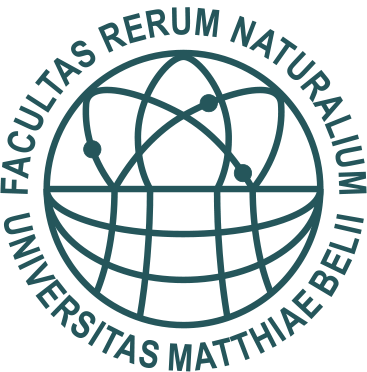Design of non-linear optical materials
During the last decades many theoretical and experimental efforts have been directed to the exploration and the design of organic non-linear optical (NLO) materials due to their potential application in technologies such as lasers, telecommunications, information processing, holography etc. Organic π-conjugated oligomers and polymers represent an excellent alternative to traditional inorganic NLO crystals because they can be easily synthesized and chemically modified. Extremely fast switching times, resistance to high intensity radiation, possibility of thin-layer fabrication, and low electric permittivity (related to low frequency dependence in non-resonant regime) are important properties in favor of organic NLO materials.

Figure 1 Modification of the laser beam frequency (colour) by transition through a NLO material.
In our laboratory we use modern theoretical and computational methods to understand structure-property relationships, what enables us to design new molecular materials for NLO applications. In collaboration with well-established foreign laboratories (e.g. FUNDP, Namur, Belgium; NHRC, Athens, Greece; Universit‚ de Nantes) we mainly focus on the design of organic NLO materials derived from polymethineimine (PMI) and its analogs. We have managed to propose several stable ?-conjugated oligomeric compounds that have potential to exhibit particularly high NLO responses.

Figure 2 Structure of polyfluoroacetylene (PFA), which was designed in our laboratory. PFA appears to exhibit more than 5x higher second-order NLO properties than all-trans PMI considered as one of the most efficient organic NLO materials. Left: π-conjugated system; Right: Electro density distribution.
Selected publications
- XENOGIANNOPOULOU, E., MEDVEĎ, M., ILIOPOULOS, K., COURIS, S., PAPADOPOULOS, M. G., BONIFAZI, D., SOOAMBAR, C., MATEO-ALONSO, A., PRATO, M.: Non-linear Optical Properties of Ferrocene- and Porphyrin-[60]fullerene Dyads, ChemPhysChem, vol. 8 (7), 2007, pp. 1056-1064.
- JACQUEMIN, D., PERPETE, E. A., MEDVEĎ, M., SCALMANI, G., FRISCH, M. J., KOBAYASHI, R., ADAMO, C.: First hyperpolarizabilities of polymethineimine with long-range corrected functionals, J. Chem. Phys., vol. 126, 2007, 191108.
- MEDVEĎ, M., STACHOVA, M., JACQUEMIN, D., ANDRE, J.-M., PERPETE, E. A.: A generalized Romberg differentiation procedure for calculation of hyperpolarizabilities. Journal of Molecular Structure: THEOCHEM, vol. 847, 2007, 39-46.
- MEDVEĎ, M., BUDZAK, Š., ČERNUŠAK, I.: High second-order NLO responses of dehydrogenated hydrogen cyanide borane(1) oligomers. Journal of Molecular Structure: THEOCHEM, vol. 961, 2010, 66-72.
- MEDVEĎ, M., BUDZAK, Š., PLUTA, T.: Static NLO responses of fluorinated polyacetylene chains evaluated with long-range corrected density functionals. Chem. Phys. Lett., vol. 515, 2011, 78-84.
